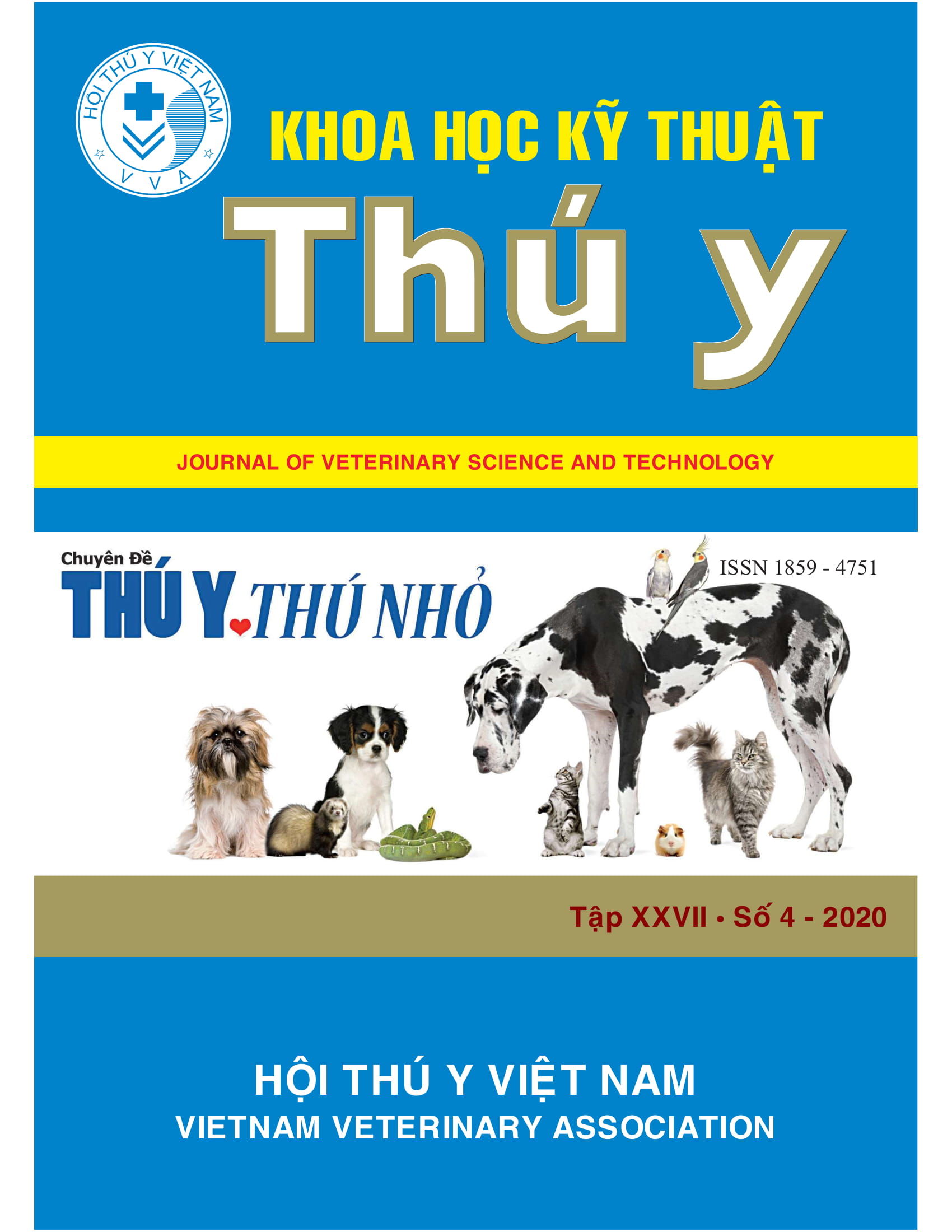Some clinical and hematological indicators in dogs infected experimentally with Trypanosoma evansi
Abstract
The result of study on several clinical and blood physiological indicators of 10 dogs at 35-days old infected experimentally with Trypanosoma evansi showed that dog was an animal species, susceptible with Trypanosoma evansi and when it was infected normally at acute situation. The body temperature of the infected dogs with Trypanosoma evansi fluctuated without any rule. Before and after infection, the body temperature of dogs was not much different. After 5 days of infection, the body temperature increased higher than normal and reached the highest after 15 days of infection (38.92 ± 0.280C). Later the dog’s body temperature decreased lower than normal, before death (38.47 ± 0.330C). The common clinical symptoms in the T. evansi-infected dogs were: fever, ruffled fur, puffy and swollen eyelids, thin and weak, loose stools, yellow
mucus and neurological symptoms when they were going to die. The dogs infected with T. evansi were subjected to the decrease in red blood cell count, hematocrit (HCT), hemoglobin content according to severity and duration of infection, the average volume of red blood cells increased higher than before infection. Specifically, after 1-5 days of infection, the average volume of red blood cells in the infected dogs increased to 76.38 ± 13.81µm3, then decreased
after 6-10 days of infection

